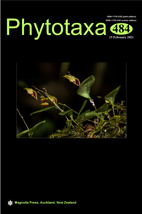Abstract
This study proposes a biogeographical regionalisation of Colombia based on geospatial analyses of plant species turnover and a revised area taxonomy. The spatial patterns of species turnover are calculated for 20,342 plant species in continental Colombia with distributions estimated from 271,568 georeferenced records aggregated to 414 (~50 km) grid cells across Colombia. The proposed biogeographic regions are defined by applying an agglomerative cluster analysis using a matrix of pairwise Simpson’s beta (bsim) dissimilarity values. Three main centres of species richness and 25 areas of endemism were identified across Colombia, complementing the definition of regionalisation. Biogeographical regionalisation comprises two dominions (Pacific and Boreal Brazilian), six provinces (Chocó-Darién, Guajira, Magdalena, Paramo, Sabana and Imerí) and thirty-five districts. The revised area taxonomy provides an updated and objective biogeographical classification for Colombia and is the first biogeographic regionalisation exclusively based on the taxic distributional overlap of Colombia´s land plants.

